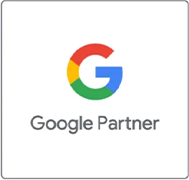In today’s AI-first world, it’s not enough to just rank on Google — you also want your business or website to appear inside AI assistants like ChatGPT. As more users turn to conversational search and AI tools, securing visibility in ChatGPT’s ecosystem can become a powerful channel for traffic, leads, and brand trust.
In this blog, I’ll walk through what it means to “rank on ChatGPT,” how to set it up, and strategies to get your website or business to show up effectively in that space.
What Does It Mean to “Rank on ChatGPT”?
ChatGPT doesn’t operate like a traditional search engine with pages and backlinks; it’s a conversational AI. However:
-
OpenAI supports Custom GPTs (also called custom assistants or plugins) that can be built or configured to access your content and act as a branded assistant. DigitallyConnects
-
By integrating your website, FAQs, product catalogs, or knowledge base into such a custom setup, ChatGPT (or related agents) can answer user queries by pulling in your content. DigitallyConnects
-
In effect, your website “ranks” in ChatGPT when the AI references or routes users to your content.
-
The more relevant, well-structured, and optimized your content is, the more likely ChatGPT or similar models will surface your site’s content in responses.
In short: “ranking” in ChatGPT means being among the sources a conversational AI will prefer to reference when responding to user queries relevant to your domain.
Step 1: Provide Clear, Structured Content
For ChatGPT (or any AI) to reliably pull from your website:
-
Organize your content with structured schemas
Use headings, subheadings (H1, H2s, H3s), tables, bullet points, FAQs, and consistent layouts. This helps AI and parsers understand the logical flow of your content. -
Include concise summaries and FAQs
Many conversational queries are brief. Include summary blocks at the top of pages (e.g. “What this page covers”) and FAQs at the end, so AI can directly feed these into responses. -
Use schema markup / structured data
Using JSON-LD, Microdata, or other schema (for products, events, services) helps search engines and AI tools better understand your page content and its context. -
Maintain high content relevance and freshness
Update your content to reflect the latest data, industry changes, or trends, because AI is more likely to prefer recent, authoritative sources when there’s a choice.
Step 2: Create or Publish a Custom GPT / Chatbot Layer
To be “discoverable” within ChatGPT:
-
Use ChatGPT’s “Create your own GPT” / Custom GPT functionality to build a branded assistant. You provide your business description, knowledge files (PDFs, FAQs, website links), and conversation prompts. DigitallyConnects
-
Set it to “public” so any ChatGPT user can discover and interact with it. DigitallyConnects
-
Structure how it responds: give it clear instructions to refer to your website, link back to pages, or suggest your services as part of relevant answers.
-
Promote your custom GPT link across your social media, website, and newsletters to increase usage, which improves its visibility and usage signals.
By doing this, you essentially embed your website into ChatGPT’s ecosystem, letting users “rank” you by interacting with your assistant directly.
Step 3: Use Location & Niche Keywords Strategically
When people query ChatGPT, they often use location + service terms, like “automatic doors in Dubai.” To ensure your content is surfaced:
-
Use geographic keywords (city, district, neighborhood) along with your main service keywords in page titles, headings, body content, and your listing in the custom GPT. E.g., Automatic Doors in Dubai, Automatic Doors in Abu Dhabi, Automatic Doors in Sharjah, etc.
-
Do neighborhood-level content: create service area pages (e.g. “Automatic Doors in Jumeirah,” “Automatic Doors in Business Bay”) that speak directly to those locales.
-
Include phrases like “near me,” “near Dubai Marina,” “in Al Quoz,” etc., as long-tail keyword variations.
-
In your custom GPT’s knowledge base, tag or categorize your content by region so that when a user asks “automatic doors near me in Dubai,” the assistant can match your local pages.
Step 4: Optimize for Conversational Queries
Conversational AI responses often answer real user questions. To align your content with this:
-
Use natural, FAQ-style questions in your content. For example:
-
“How much do automatic doors cost in Dubai?”
-
“Which company installs automatic doors in Sharjah?”
-
“What maintenance do automatic doors require in Abu Dhabi?”
These help ChatGPT pick up your content when users query those exact or similar questions.
-
-
Include answer-first formats: for example, start with “Yes, we install automatic doors in Jebel Ali…” and then explain. The direct answer first style is suitable for snippet-style delivery.
-
Write in the style of a helpful assistant — concise, direct, friendly — so that when ChatGPT reuses parts of your content, it doesn’t need heavy rephrasing.
Step 5: Build Authority & Signals (Even for AI Systems)
Even though ChatGPT doesn’t use backlinks in the same way Google does, the broader web signals influence whether your content is considered reliable or worthy of reference.
-
Create authoritative, high-quality content (guides, case studies, whitepapers) that others want to link to or reference.
-
Encourage user engagement and sharing — when users talk about your site, share it, or mention it, it increases your domain signal.
-
Use social proof, testimonials, and showcase real projects in Dubai/UAE; such evidence helps strengthen your credibility.
-
Guest post on industry sites and link back to your content areas — helps with web presence, which AI systems can be trained on.
Step 6: Monitor, Iterate & Improve
Once your custom GPT is published and your content live:
-
Track usage metrics: monitor which queries users ask, which responses trigger redirects to your site, and where your assistant falls short.
-
Refine answers: if users ask questions that your assistant doesn’t answer well, add those to your knowledge base.
-
Update content regularly: when your services change, new locations, new products — refresh accordingly.
-
Promote your custom GPT: encourage users to use it directly — more interactions signal value.
Why This Strategy Works
-
Emerging channel advantage
Many businesses are focused on traditional SEO; fewer have optimized for conversational AI. Early adoption gives you a headstart. -
Direct engagement with users
Rather than just being part of a search result list, users can talk with your assistant, ask questions, and be guided — which deepens brand connection. -
Long-term visibility
As AI tools grow (ChatGPT, Bing Chat, etc.), having content structurally accessible to them ensures you’re not left behind. -
Complement to SEO, not replacement
This approach doesn’t replace your search engine optimization; it adds another layer so that your content is discoverable in both search engines and AI assistants.
Conclusion
Ranking your website on ChatGPT is no longer science fiction — it’s an attainable strategy today. By combining well-structured content, a public-facing custom GPT, local keyword targeting, and conversational optimization, you can make your business visible inside AI-powered tools.
Start by submitting your business through a custom GPT, feed it your content and FAQs, make it public, and promote usage. Then keep refining your content, adding new topics and location pages, and monitoring what users ask. Over time, your brand becomes one of the trusted, go-to sources that ChatGPT references.

 +91 7982 009 803
+91 7982 009 803


